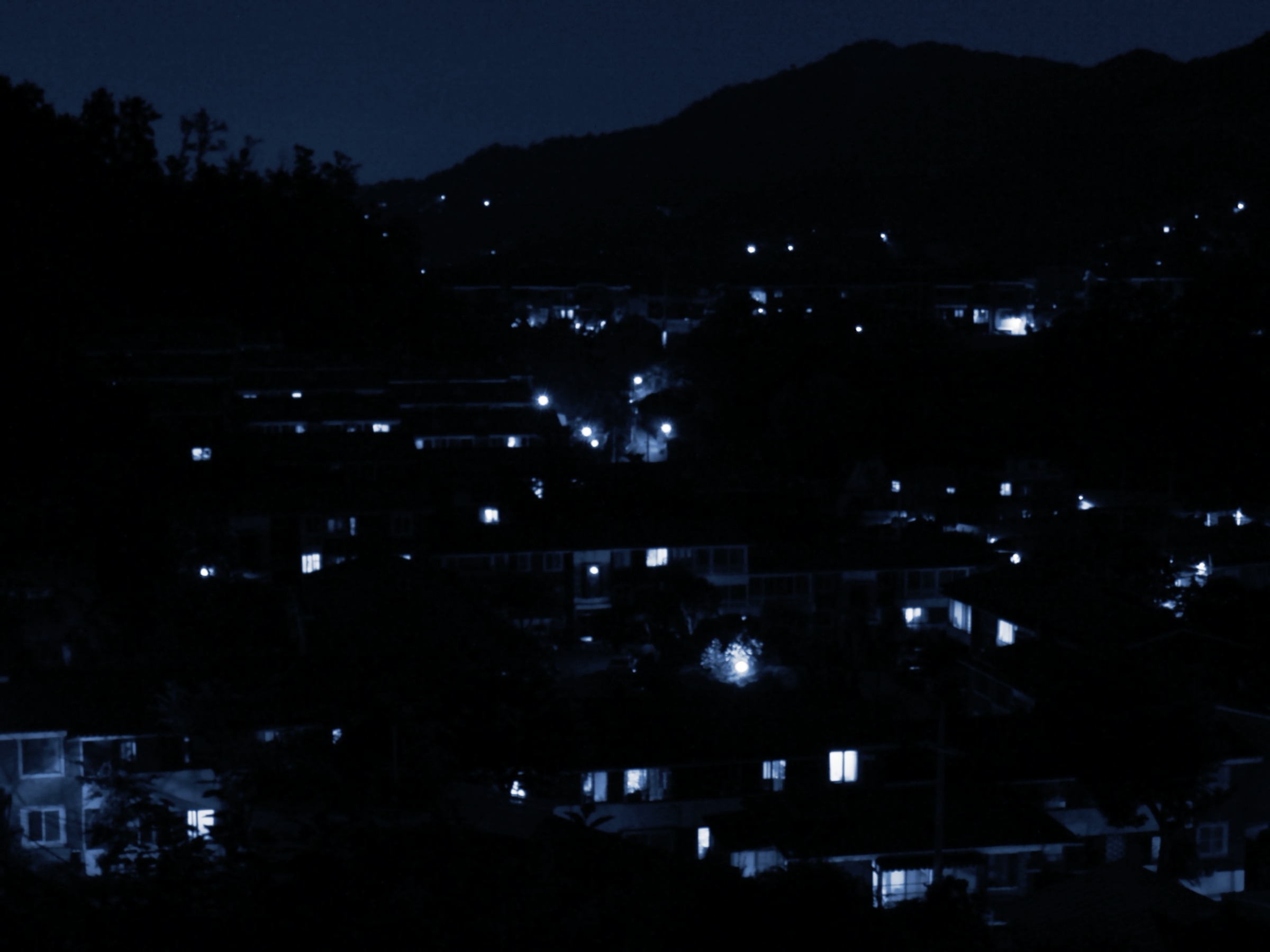
Rarely does a film make you as intimately aware of the gentlest motion of a breeze or the sound of your own breathing as Sohn Koo-yong’s Night Walk (2023, screened in YIDFF’s “New Asian Currents” program) does. The silent film superimposes the director’s playful illustrations and handwritten texts of Joseon Dynasty-era poems over urban and natural landscapes from his neighborhood in Seoul. As you meditate on the textures of the visuals and poetry, time seems to slow down. It is as if you are on an endless night walk, pausing frequently to take in every detail. The piece does not adhere to a linear narrative, and the dozens of poems written by centuries-old scholars appear to be ordered purely aesthetically. There is no character but the nocturnal neighborhood and the viewers themselves, whose participation is needed to realize Sohn’s artistic vision.
Devoid of any soundtrack, the film surrounds the viewer in the darkness and quiet of the night, creating a unique dichotomy of isolation and companionship. The introspective tone heightens awareness of your own body and memories of walking at night, yet you share each passing moment in a darkened theater full of others in their own personal reflections. The camera is completely still, and there is no human movement in the scenes of alleyways, creeks, city infrastructure, or the surrounding forest. Between pregnant cuts to black, the viewer starts to pay close attention to the visual rhythms created by the duration of and natural movement within a shot. A cloud moving against the moon feels like a relief, a cat turning its head a welcome friend. “The moon and wind and I met one night,” reads one poem overlayed on top an image of a tree’s shadow. Illustrations of raindrops superimposed on a burbling stream create an illusion of sound even in silence. The blue-black palette draws heightened attention to shadow and light that creates a distinct appreciation for the outline of a tree, or an illuminated apartment window.
Juxtaposing poetry from the past with modern nightscapes creates a timeless feeling for viewers to enjoy. It is almost surprising how well the delicate descriptions of human-nature relationships translate across culture, language, and distance. By the end of the 65-minute film, we are reminded of the comfortable solitude that exists when we slow our internal movements down enough to appreciate our surrounding environments. When we do, we can’t help feeling gratitude for having shared the experience with those around us.
Hope Davison
![ドキュ山ライブ! [DOCU-YAMA LIVE!]](http://www.yidff-live.info/wp-content/themes/yidff-live_2017/images/header_sp_logo1.png)

